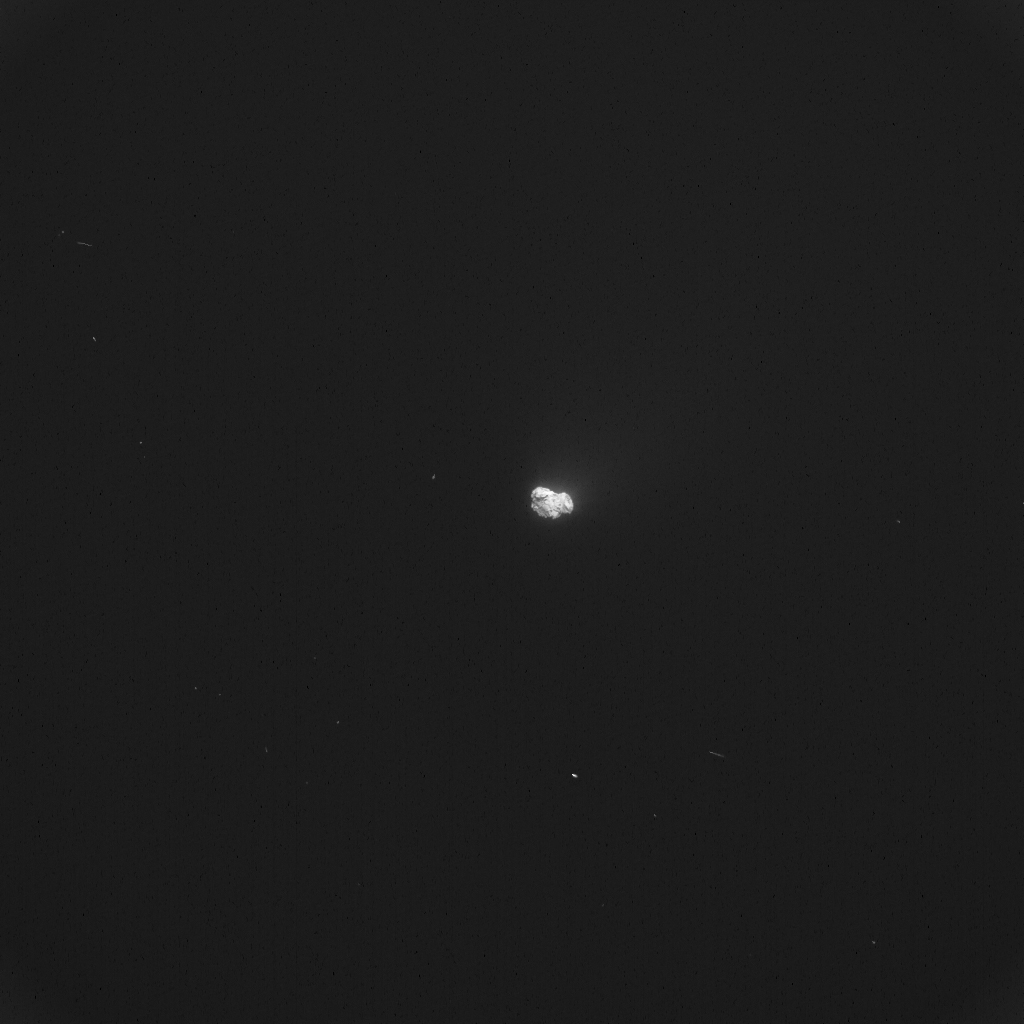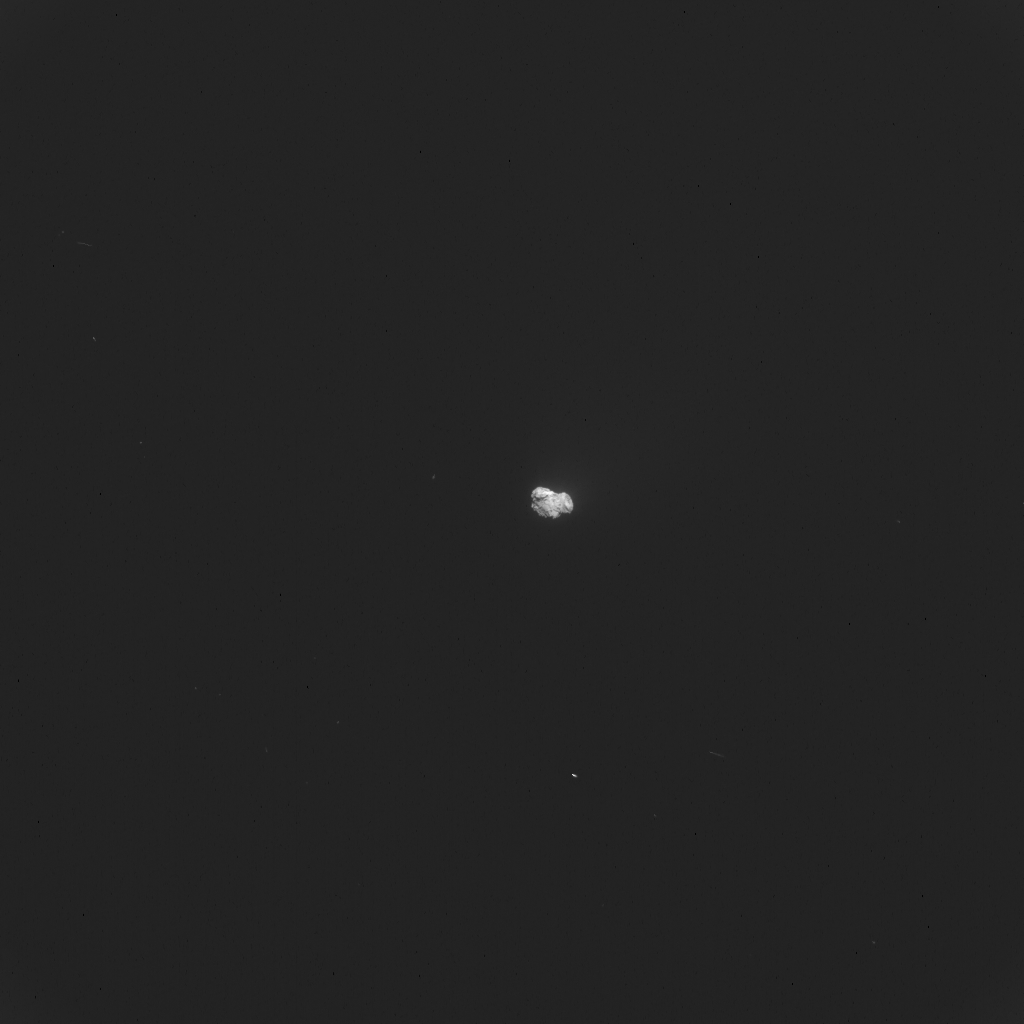Today’s CometWatch entry is an image from Rosetta’s NAVCAM taken on 1 October 2015, at a distance of 1323 km from the nucleus of Comet 67P/Churyumov-Gerasimenko.

Single frame enhanced NAVCAM image of Comet 67P/C-G taken on 1 October 2015. Credits: ESA/Rosetta/NAVCAM – CC BY-SA IGO 3.0
The scale is 113 m/pixel and the image measures 115 km across. The contrast was increased to bring out the comet’s activity.
From this perspective, the double-lobed shape of the nucleus is not as obvious as it is in some of the more iconic images of 67P/C-G; in this view, the large lobe is in the foreground, on the left, while the small lobe can be seen in the background, towards the right.
The Imhotep region dominates the view on the large lobe. To its right, parts of the newly identified regions on the comet’s southern hemisphere are also visible: Anhur and Khonsu on the large lobe, Sobek on the neck and Wosret on the small lobe.
When this image was taken, Rosetta was approaching the nucleus again after having reached a distance of about 1500 km as part of a far excursion to study the comet’s environment at large. The spacecraft is now about 600 km from the comet.
The original 1024 x 1024 image of today’s CometWatch is provided below:










Discussion: 6 comments
Is this the actual erosion level of the south plaque?
https://blogs.esa.int/rosetta/files/2015/09/ESA_Rosetta_AlexanderGate_context.jpg
Very little jet emission going on now. Any suggestions as to why. Has the opportunity to study the jets gone.
@OJ
“Very little jet emission going on now. Any suggestions as to why.”
It is further from the Sun. Less heat = less sublimation.
Also the spacecraft is still far from the comet here, so the NAVCAM cannot resolve as much detail as from closer distances.
Not necessarily ian. Ask Gerald. He believes there is a hysteresis effect. Also in previous visits of this comet peak activity has occurred weeks after perihelion, 6 or 8 weeks. And other comets have flared up or exploded out near Jupiter. It is not as simple as you think.
Getting closer to a distance that Philae’s signal can reach, right? Safe travel Rosetta!!